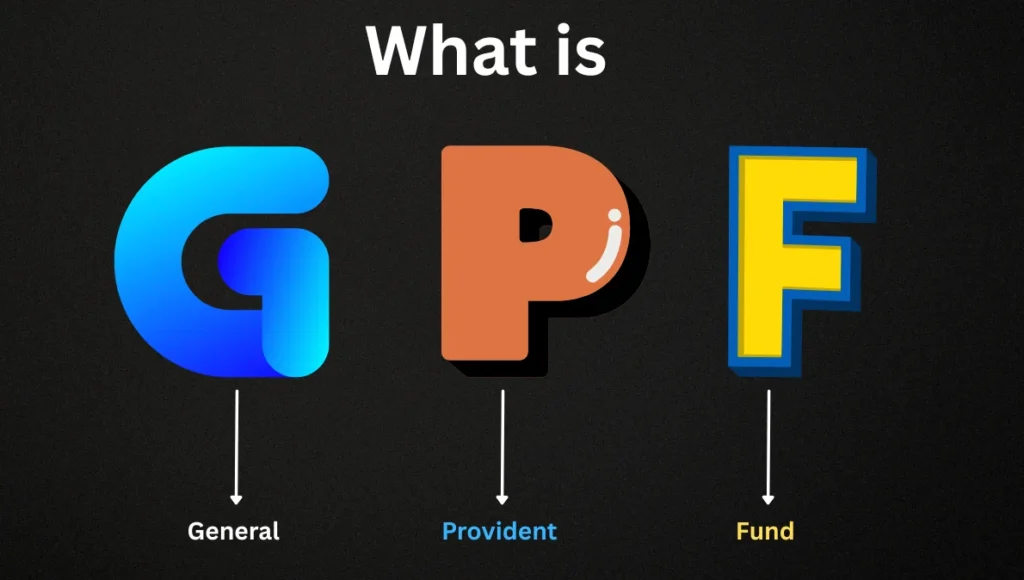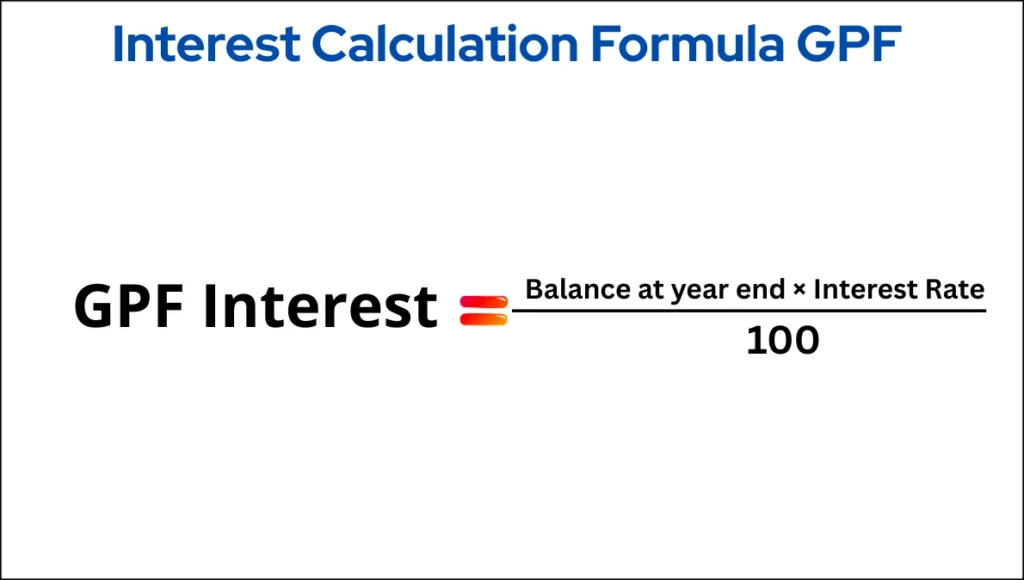🏦 GPF Calculator
The General Provident Fund (GPF) is a crucial savings scheme for government employees in India. It helps provide financial security during the service period and after retirement. For anyone working in government service, understanding how to calculate the GPF balance accurately can help plan a secure financial future. This is where the GPF Calculator becomes an important tool.
In this detailed article, we will cover everything about the GPF Calculator—what it is, how it works, how to use it, and why it is important for Indian government employees. The explanations will be straightforward and easy to understand for everyone.
What is GPF ?
The General Provident Fund (GPF) is a savings scheme offered by the Government of India to its employees. It is a means to accumulate savings through regular monthly contributions by the employee, which are later available with interest for withdrawal or after retirement.

- The GPF scheme is primarily for central government employees, but many state governments and union territories also follow similar rules.
- Employees contribute a fixed percentage of their basic salary and dearness allowance.
- The government also pays interest on the accumulated balance at a rate fixed every quarter (currently around 7.1% per annum).
- The fund is managed by the Ministry of Finance and overseen by the government for safety and transparency.
The GPF acts like a forced savings account that helps employees accumulate a retirement corpus systematically during their service years.
Why Use a GPF Calculator?
Manually calculating GPF interest and balance at the end of each year can be complicated because:
- Contributions are made monthly.
- Interest compounds annually but is calculated on a varying monthly balance.
- Withdrawals may happen, affecting the balance.
- Interest rates change quarterly.
A GPF Calculator simplifies this by automating calculations and providing a clear picture of the expected balance and interest earnings.
Benefits of Using a GPF Calculator
- Accurate calculations: Eliminates errors in manual interest and balance calculations.
- Time-saving: Quick and instant results without complex math.
- Financial planning: Helps employees plan their finances and retirement savings better.
- Transparency: Users can track their contributions and projected growth in real time.
- Scenario simulation: Users can change variables such as monthly contribution, interest rate, or withdrawal amounts to see different outcomes.
How Does the GPF Calculator Work? The Basic Formula
The GPF interest for a year is calculated mainly on:
- The opening balance at the beginning of the financial year.
- The monthly contributions made during the year.
- Adjustments for any withdrawals during the year.
The interest rate is set quarterly by the government and changes based on economic factors.
The Simplified Interest Calculation Formula:
GPF Interest=100/Balance at year-end×Interest Rate

However, since contributions are monthly, the actual process is:
- Interest on opening balance: Calculated for the full year.
- Interest on monthly subscriptions: Calculated on each monthly deposit for the period remaining till the end of the year (usually half-year average is used).
- Withdrawals reduce the balance.
Stepwise Calculation Process:
- Calculate interest on the opening balance for one full year.
- Calculate the total subscription (sum of monthly contributions).
- Calculate interest on subscriptions for the number of months the contribution exists in the year (usually considered half a year on average for monthly contributions).
- Subtract any withdrawals made during the year.
- Add interest accrued to update the balance.
Inputs Needed for the GPF Calculator
To use a GPF Calculator effectively, you need these inputs:
- Opening balance: The balance in your GPF account at the start of the year.
- Monthly contribution amount: Typically 6%-12% of the basic salary + dearness allowance; minimum 6%. Many employees contribute 10%-12%.
- Interest rate: The government declares this quarterly; currently, it is around 7.1%.
- Withdrawal amount: Any amount withdrawn during the financial year.
- Period: The tenure or number of years you want to calculate for.
Example Calculation Explained
Suppose Mr. Sharma is a government employee with the following details:
- Opening balance on 1st April: ₹50,000
- Monthly contribution: ₹3,000
- Interest rate: 7.1% per annum
- Withdrawals during the year: ₹10,000
Step 1: Interest on Opening Balance
Interest = 50,000×7.1100=₹3,55050,000×1007.1=₹3,550
Step 2: Total Contribution in One Year
Monthly contribution x 12 = 3,000×12=₹36,0003,000×12=₹36,000
Step 3: Interest on Monthly Contributions
The calculator assumes contributions are made monthly, so the average duration of contribution is 6 months. Interest on monthly contributions = 36,000×1007.1×126=₹1,278
Step 4: Calculate Closing Balance
Closing balance = Opening balance + Interest on opening balance + Total contributions + Interest on contributions – Withdrawals Closing balance = 50,000 + 3,550 + 36,000 + 1,278 – 10,000 = ₹80,828
This is the balance after one year of contributions, interest, and withdrawal.
How to Use Online GPF Calculators?
Online GPF calculators help you compute this quickly without manual calculations. Here is a step-by-step guide for using such calculators:
- Open a trusted online GPF calculator like from ClearTax or Pocketful.
- Enter your opening balance at the start of the year.
- Put your monthly GPF contribution amount.
- Enter the current interest rate applicable (usually shown on the calculator).
- Input the total withdrawal amount you plan to withdraw during the year.
- Specify the number of years or period you want to calculate.
- Click calculate to view the projected balance and interest earned.
Important Things to Remember About GPF
- Contribution Limits: Minimum 6% and maximum up to 100% of basic pay can be contributed.
- Interest Rates: Fixed quarterly by the Ministry of Finance; currently around 7.1%.
- Tax Benefits: Contributions to GPF are eligible for deduction under Section 80C of the Income Tax Act.
- Withdrawal Rules: Partial withdrawal allowed for specific reasons like medical emergency, education, or house construction.
- Nomination Facility: You can nominate a family member to receive the GPF amount in case of death.
- Portability: If you change government jobs, the GPF account can be transferred.
Advantages of Investing Through GPF
- Safe and Secure: Government-backed scheme with guaranteed interest.
- Consistent Savings: Helps inculcate a habit of saving regularly since contributions are deducted from salary.
- Long-term Benefit: Ideal for retirement planning, providing a lump sum post-retirement.
- Tax Efficiency: The contributions, interest earned, and maturity amount are exempt from tax.
- Financial Stability: Helps employees accumulate funds steadily for major life expenses.
Differences Between GPF and Other Provident Funds
| Feature | GPF (General Provident Fund) | EPF (Employees Provident Fund) | PPF (Public Provident Fund) |
|---|---|---|---|
| Applicable to | Government employees | Private sector employees | Any Indian citizen |
| Contribution | Employee contribution (6-12% of basic pay) | Employee and employer contribution (total 12%) | Voluntary contributions (up to ₹1.5 Lakh/year) |
| Interest Rate | Fixed quarterly by government (approx. 7.1%) | Fixed by government (approx. 8.1%) | Fixed yearly by government (approx. 7.1%) |
| Tax Benefits | Yes, under Section 80C | Yes, under Section 80C | Yes, under Section 80C |
| Withdrawal | Partial allowed with restrictions | Partial allowed with restrictions | Partial allowed after 5 years |
| Portable | Within government jobs | Universal across jobs | Not applicable |
Tips for Maximizing Benefits from Your GPF Account
- Contribute at least 10%-12% of your basic pay for healthy corpus growth.
- Make sure to keep track of your monthly deductions and contributions.
- Use a GPF calculator regularly to monitor your savings and plan withdrawals wisely.
- Avoid frequent withdrawals to maximize interest compounding.
- Keep your nomination updated for security of your assets.
- Stay informed about updates in interest rates by checking official sources like the Ministry of Finance.
Frequently Asked Questions (FAQs)
What is a GPF Calculator?
The GPF Calculator is an online tool that helps government employees calculate the projected balance in their General Provident Fund account, including interest accrued over a period of time based on contributions and the applicable interest rate.
How is GPF interest calculated?
GPF interest is calculated annually using the formula: (GPF Balance at the end of the year × GPF Interest Rate) ÷ 100. The interest rate is set by the government and may change yearly.
What is the current GPF interest rate?
The current GPF interest rate for the financial year 2023-24 is 7.1% per annum as set by the government.
Is there any tax benefit on GPF contributions?
Yes, contributions to the GPF qualify for tax deductions under Section 80C of the Income Tax Act, offering tax benefits to government employees.
How often are contributions deducted and added to the GPF account?
Contributions are deducted monthly from the employee’s salary and credited to the GPF account.
Conclusion
The General Provident Fund (GPF) is one of the most valuable retirement planning tools for Indian government employees. By regularly contributing and calculating the interest earned with a GPF Calculator, employees can keep track of their savings growth easily and plan their finances better.
Using a GPF calculator helps cut through the mathematical complexity involved in manual calculations, empowering employees with knowledge and confidence about their financial future. This blends tradition with technology, keeping the Indian government employee financially secure and well-prepared for retirement.
